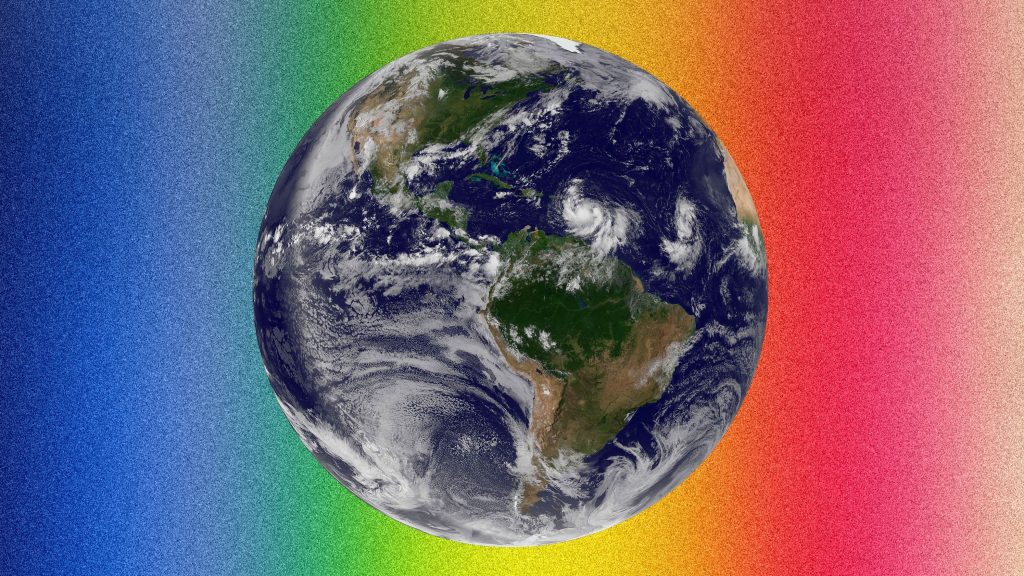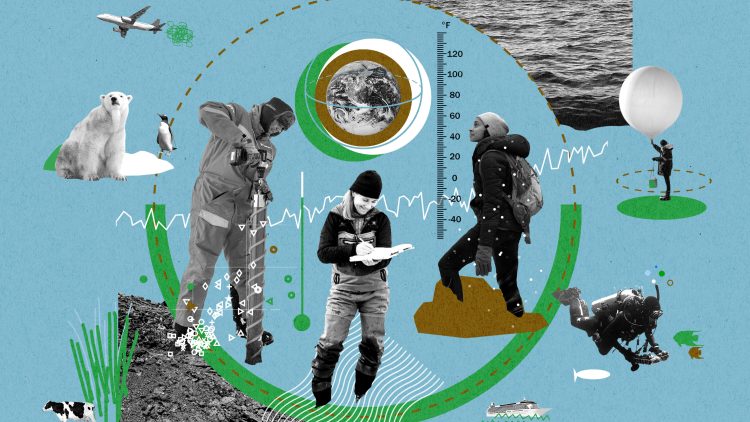Prologue: When the Climate Crisis Becomes Personal
The climate crisis is often discussed in terms of degrees Celsius, emission targets, and economic losses. Yet for millions of people, it is not a distant abstraction but a lived reality. Rising seas swallow the land where their ancestors farmed. Fierce wildfires destroy homes and memories. Prolonged droughts test the resilience of entire communities.
Behind every statistic lies a human story—of fear, adaptation, creativity, and hope. These stories reveal not only the scale of the crisis but also the profound capacity of individuals and communities to respond with courage.
This article steps away from charts and policy frameworks. Instead, it amplifies the voices of those on the frontlines—farmers, fishermen, urban migrants, youth activists—whose lives embody both the vulnerability and resilience of humanity in a warming world.
1. The Vanishing Shores of Kiribati: A Nation’s Struggle for Existence
1.1 Life on the Edge of the Ocean
For generations, the people of Kiribati, a Pacific island nation of 33 atolls, have lived in harmony with the sea. Their culture, economy, and identity revolve around fishing, coconut harvesting, and communal life on slender strips of land barely above sea level.
But rising seas are now encroaching on their homes. Tides that once marked the rhythm of life now bring saltwater into freshwater wells. Storm surges sweep across villages, uprooting trees and washing away cemeteries. In some places, the shoreline has retreated by dozens of meters within a single generation.
1.2 A Future of Displacement
For President Anote Tong, who led Kiribati from 2003 to 2016, climate change was not a theoretical debate but a national emergency. His government purchased land in Fiji as a potential relocation site for future generations.
“We are not running away,” he once said. “We are preparing for survival.”
This story reflects one of the gravest human dimensions of climate change: climate displacement. According to the World Bank, by 2050, over 200 million people could be forced to migrate within their own countries due to sea-level rise, droughts, and extreme weather.
2. Farmers on the Drought Plains of Kenya: Sowing Seeds of Adaptation
2.1 A Family’s Struggle with the Rain
In the semi-arid region of Turkana, Kenya, 55-year-old farmer Amina remembers a time when seasonal rains arrived predictably. Today, the rains fail more often than not. Her goats perish in prolonged droughts, and her maize harvest shrinks as dry seasons lengthen.
“Before, we worried about prices,” she says. “Now we worry about whether the rain will come at all.”
2.2 The Power of Local Innovation
Rather than give up, Amina joined a women’s cooperative that introduced drought-resistant sorghum and set up a solar-powered irrigation pump. The cooperative also provides microloans to help farmers buy seeds and fertilizer.
Such grassroots adaptations show that even the most climate-vulnerable communities are not passive victims. Their stories highlight the importance of combining local knowledge with innovative solutions.
By 2030, the UN Food and Agriculture Organization projects that climate-smart farming could lift millions out of hunger while reducing agricultural emissions.
3. The Wildfire Generation in California: Youth Fighting Flames and Fear
3.1 Growing Up Under an Orange Sky
For 16-year-old Diego in northern California, wildfire season is now part of childhood memory. He recalls summers spent under smoky skies, breathing through masks not for a pandemic but to avoid inhaling toxic air. His family’s home narrowly survived the 2020 wildfires that destroyed thousands of houses and displaced entire communities.
“Sometimes it feels like the earth is burning faster than we can save it,” he says.
3.2 From Trauma to Activism
Diego joined a local youth-led climate organization, organizing community cleanups and lobbying city councils for wildfire prevention funds. His generation recognizes that climate change is not just an environmental problem but a fight for their right to a livable future.
California’s wildfire crisis illustrates how climate impacts amplify mental health challenges. Psychologists now speak of “eco-anxiety,” a growing phenomenon among young people worldwide.

4. Fishermen of the Mekong Delta: Navigating Changing Waters
4.1 A River Out of Balance
The Mekong River, stretching over 4,000 kilometers, has long been the lifeline for millions in Southeast Asia. Its seasonal floods replenish rice paddies, and its fisheries provide food security.
But a combination of upstream dam construction, shifting rainfall patterns, and rising sea levels is disrupting this delicate balance. Fishermen in Vietnam’s delta now report dwindling catches, as spawning grounds are altered and saltwater intrusion damages wetlands.
4.2 Community-Driven Restoration
In the village of Can Tho, 48-year-old fisherman Minh and his neighbors launched a community project to restore mangroves along the riverbanks. These mangroves serve as nurseries for fish, buffer storm surges, and absorb carbon.
Such local initiatives demonstrate that adaptation is often as much about restoring nature as it is about technology.
5. Migrants in Dhaka: Life Between Floods and Dreams
5.1 Urban Migration under Rising Waters
Bangladesh faces some of the highest risks from sea-level rise and river flooding. In Dhaka, the capital, tens of thousands of migrants arrive every year after losing farmland to floods or river erosion.
Shirin, a 32-year-old mother of three, once farmed rice in the lowlands of Barisal. After three consecutive floods destroyed her fields, she moved to Dhaka and now works in a garment factory.
“We didn’t want to leave,” she says. “But the river took our home.”
5.2 Resilience in the City
Life in Dhaka’s informal settlements is precarious—crowded, poorly serviced, and still vulnerable to floods. Yet migrants like Shirin show remarkable resilience, finding new livelihoods and forging support networks.
Their stories remind us that climate migration is not merely a crisis but also an adaptation strategy—one that requires inclusive urban planning and social safety nets.
6. Lessons from the Frontlines
The human stories from Kiribati, Kenya, California, the Mekong Delta, and Dhaka share common threads:
- Vulnerability is Uneven: The poorest and least responsible for global emissions often face the greatest risks.
- Resilience is Collective: Communities thrive when they collaborate—whether in women’s cooperatives, youth movements, or village restoration projects.
- Adaptation is Possible: With the right support—technology, finance, and governance—communities can adjust to new realities without losing dignity or hope.
- Voices Must Be Heard: Policies crafted in conference halls must be informed by the lived experiences of those directly affected.
7. Bridging Local Experience and Global Action
The resilience of frontline communities offers lessons for the world:
- Inclusive Policy Design: Climate strategies must integrate local knowledge and ensure marginalized groups have a voice in decision-making.
- Financing Adaptation: International climate finance should prioritize grassroots projects that directly benefit vulnerable populations.
- Building Climate-Resilient Cities: Urban centers need to be designed to accommodate migrants and withstand future climate shocks.
- Education and Awareness: Empowering youth with knowledge and leadership opportunities can sustain long-term climate resilience.
- Solidarity Across Borders: As impacts intensify, nations must strengthen support for those displaced by climate disasters.
8. Toward a Future of Shared Resilience
The climate crisis, though global in scale, is experienced in deeply personal ways. From island nations threatened by rising seas to farming communities battling drought, human resilience is a testament to the capacity for adaptation.
These stories also highlight the limits of resilience in the absence of urgent action to cut emissions and support those on the frontlines. A warming world demands not just technological innovation but also solidarity, empathy, and justice.
Epilogue: Listening as the First Step to Action
If there is one lesson from the frontlines, it is that the climate crisis cannot be addressed solely through scientific models and international treaties. True progress begins with listening—to Amina tending her sorghum under a hot sun, to Diego breathing wildfire smoke, to Shirin rebuilding her life in a crowded city.
Their stories remind us that climate change is a shared human journey. By amplifying their voices, we not only honor their struggles but also chart a path toward a more just and resilient future.
















































